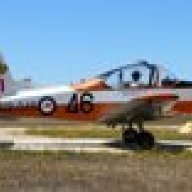Can I recommend that if we are going to quote regs to put a link and refer the source document rather than potentially mis-quote...i.e. "recognised aero engine" is not what the regulation states, it also doesn't list the engines. What the regulation states, as per the link to the source in my previous post is:
5.2 An aeroplane may be flown inside Class A, B, C and D airspace only if all of
the following conditions are complied with:
(a) the aeroplane is certificated to the design standards specified in section
101.55 or meets the criteria specified in paragraph 21.024 (1) (a) or
21.026 (1) (a), or regulation 21.186, of CASR 1998;
(b) the aeroplane is fitted with an engine of a kind to which paragraph 6.1 of
section 101.55 of the Civil Aviation Orders applies, or that CASA has
approved as being suitable for use in an aircraft to which this section
applies, and is not subject to any conditions that would prevent the flight;
© the aeroplane is fitted with a radio capable of two-way communication
with Air Traffic Control;
(d) the aeroplane is flown by the holder of a valid pilot licence (not being a
student pilot licence):
(i) issued under Part 5 of the Regulations; and
(ii) that allows the holder to fly inside the controlled airspace;
(e) the pilot has satisfactorily completed an aeroplane flight review in
accordance with regulation 5.81, 5.108 or 5.169 of the Regulations;
(f) if the controlled airspace in which the aeroplane is operating requires a
transponder to be fitted — the aeroplane
I don't want to upset anyone, but these are legal documents which prescribe flying operations and mis-quoting or incorrect interpretation could lead to confusion. There is nothing you need to know about flying regulations that isn't in one of the various manuals/orders/publications. If / when you ask your instructor for information, ask for the reference as well as the information. Learn to fish.





